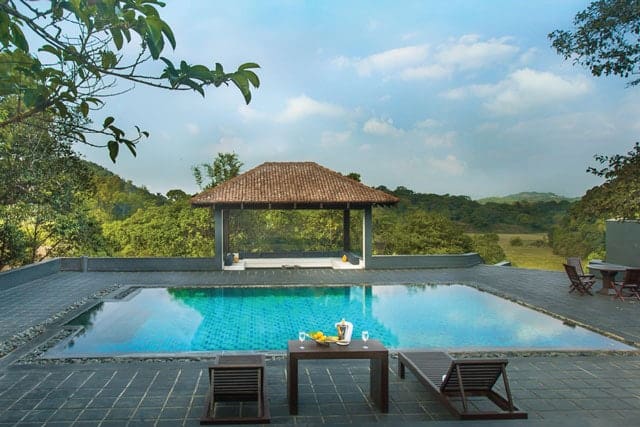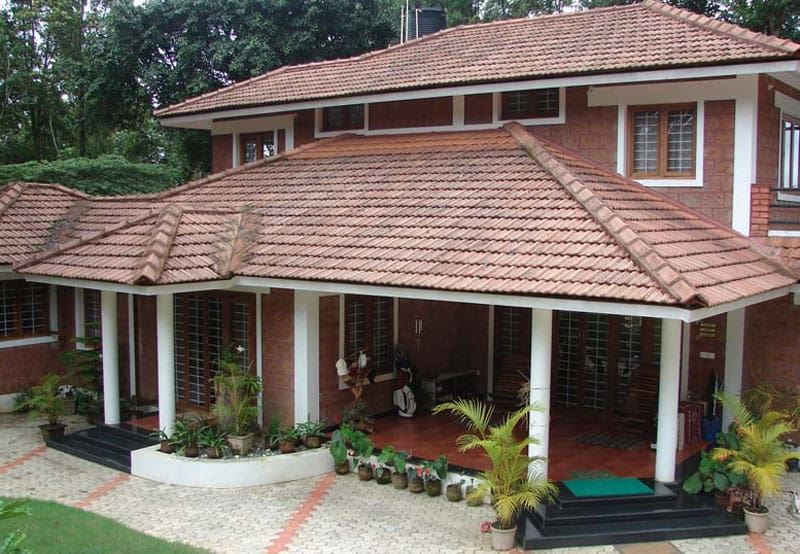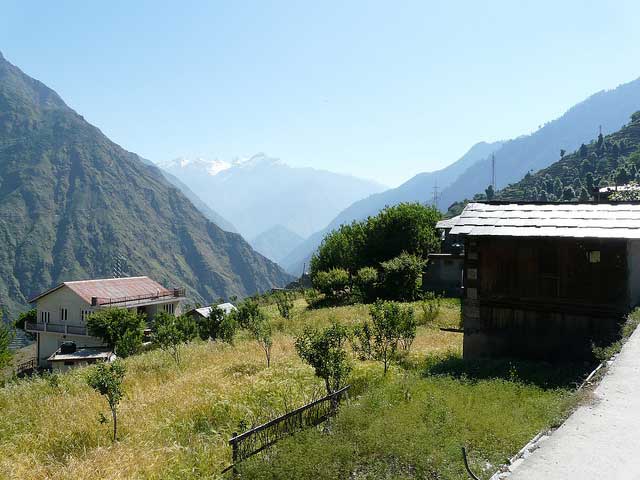Nestled in the heart of Karnataka, Chikmagalur is a picturesque hill station renowned for its lush coffee plantations, misty mountains, cascading waterfalls, and serene temples. Often referred to as the “Coffee Land of Karnataka,” this charming destination offers a perfect blend of natural beauty, adventure, and cultural heritage. Whether you’re a nature lover, history enthusiast, or someone seeking tranquility, Chikmagalur has something for everyone. In this comprehensive guide, we explore the top 5 places to visit in Chikmagalur , providing detailed insights, practical tips, and immersive descriptions to help you plan an unforgettable journey.
1. Mullayanagiri: Scaling the Heights of Karnataka
The Crown Jewel of Chikmagalur
Standing tall at an elevation of 1,930 meters (6,330 feet) , Mullayanagiri is the highest peak in Karnataka and one of the most iconic landmarks in Chikmagalur. This majestic mountain offers breathtaking panoramic views of the Western Ghats, rolling hills, and verdant valleys. Whether you’re an avid trekker or simply looking for a peaceful escape, Mullayanagiri promises an experience like no other.
Why Visit Mullayanagiri?
The allure of Mullayanagiri lies not only in its height but also in the sense of accomplishment it brings to those who conquer it. The summit is adorned with a small temple dedicated to Lord Shiva, adding a spiritual dimension to the climb. During sunrise and sunset, the sky transforms into a canvas of vibrant hues, making it a photographer’s paradise. The cool breeze and serene ambiance make it an ideal spot for meditation and introspection.
Trekking Experience
The trek to Mullayanagiri begins from Sarpadhari , a base point located approximately 12 kilometers from Chikmagalur town. The trail winds through dense forests, rocky terrains, and steep inclines, offering glimpses of exotic flora and fauna along the way. As you ascend, you’ll encounter diverse ecosystems, including shola forests and grasslands, which are home to rare species of birds, butterflies, and insects.
The trek is moderately challenging, with some sections requiring careful navigation due to loose rocks and uneven paths. However, the reward of reaching the summit far outweighs the effort. Once at the top, you’ll be greeted by sweeping views of the surrounding landscape, including the Baba Budangiri Hills, Manikyadhara Falls, and the distant plains of Karnataka.
Tips for Visitors
- Best Time to Visit: October to March, when the weather is cool and pleasant. Avoid visiting during the monsoon season, as the trails can become slippery and visibility may be poor.
- What to Carry: Wear comfortable trekking shoes, carry water, snacks, and a light jacket for the chilly temperatures at the summit. A flashlight or headlamp is essential if you plan to trek early in the morning or late in the evening.
- Safety Precautions: Always trek with a companion or group, and inform someone about your itinerary. Avoid venturing off the marked trail, as the terrain can be treacherous in certain areas.
Nearby Attractions
After conquering Mullayanagiri, you can explore nearby attractions such as:
- Baba Budangiri Hills: Home to the revered shrine of Saint Baba Budan, these hills are steeped in history and spirituality.
- Manikyadhara Falls: A sacred waterfall believed to possess healing properties, located near the Baba Budangiri Temple.
- Z Point: A scenic cliff offering panoramic views of the Western Ghats, perfect for photography enthusiasts.
2. Baba Budangiri: A Spiritual and Natural Haven
A Confluence of Spirituality and Nature
Located near Mullayanagiri, Baba Budangiri is a revered pilgrimage site and a haven for nature lovers. Named after the Sufi saint Baba Budan, this hill range is believed to be the birthplace of coffee cultivation in India. The area is dotted with ancient shrines, caves, and waterfalls, creating a serene atmosphere that captivates every visitor.
Exploring the Shrines
At the heart of Baba Budangiri lies the Dattatreya Temple , a unique shrine that houses idols of three deities—Lord Dattatreya, Lord Hanuman, and Lord Ganapathi. The temple attracts devotees from various faiths, reflecting the harmonious coexistence of Hinduism and Islam in the region. Adjacent to the temple is a cave where Saint Baba Budan is said to have meditated for years. The cave is a popular spot for visitors seeking blessings and solace.
Manikyadhara Falls
One of the highlights of visiting Baba Budangiri is the Manikyadhara Falls , a sacred waterfall believed to possess healing properties. The cascading waters create a mesmerizing sight, especially during the monsoon season when the flow is at its peak. Pilgrims often take a dip in the pool below the falls to seek blessings. The surrounding forest adds to the tranquil ambiance, making it an ideal spot for picnics and relaxation.
Practical Information
- Accessibility: Baba Budangiri is accessible via a scenic drive from Chikmagalur, followed by a short trek. The road leading to the base point is well-maintained, making it convenient for travelers.
- Facilities: Basic amenities such as restrooms and food stalls are available near the temple complex. However, it’s advisable to carry your own supplies if you plan to spend an extended period outdoors.
Cultural Significance
The region holds immense historical importance as it marks the introduction of coffee to India. Legend has it that Saint Baba Budan smuggled seven coffee beans from Mecca and planted them here, laying the foundation for India’s thriving coffee industry. Today, the lush coffee plantations surrounding Baba Budangiri stand as a testament to his legacy.
Local Legends
According to folklore, Saint Baba Budan was a revered figure who bridged religious divides through his teachings and actions. His shrine continues to attract pilgrims from across the country, fostering unity and harmony among diverse communities.
3. Hebbe Falls: Nature’s Grandeur Unveiled
A Majestic Cascade Amidst Wilderness
Tucked away in the dense forests of the Western Ghats, Hebbe Falls is a stunning two-tiered waterfall that captivates visitors with its sheer beauty. The falls plunge from a height of over 150 feet, creating a mesmerizing spectacle that leaves onlookers spellbound. Surrounded by lush greenery and rocky cliffs, Hebbe Falls is a true testament to nature’s grandeur.
Activities to Enjoy
Visitors can enjoy a refreshing dip in the natural pools formed by the cascading waters. The area around the falls is ideal for picnics, photography, and birdwatching. For adventure enthusiasts, the trek to Hebbe Falls offers an exhilarating experience, as the trail passes through coffee plantations and dense forests. Along the way, you’ll encounter exotic flora and fauna, adding to the charm of the journey.
How to Reach
The falls are located approximately 10 kilometers from Kemmanagundi, a popular hill station near Chikmagalur. The trek to the base of the falls takes about 30-45 minutes and is relatively easy, making it suitable for families and casual hikers. The trail is well-marked, with occasional resting points where you can pause to admire the scenery.
Things to Keep in Mind
- Weather Considerations: Avoid visiting during heavy rainfall, as the trails can become slippery. It’s best to check the weather forecast before planning your trip.
- Eco-Friendly Practices: Dispose of waste responsibly and avoid littering to preserve the pristine environment. Carry reusable water bottles and avoid using single-use plastics.
Local Legends
According to local folklore, Hebbe Falls is named after a young woman named Hebbe, who was known for her beauty and kindness. The falls are believed to symbolize her grace and purity, drawing parallels between her story and the cascading waters. This legend adds a layer of mystique to the already enchanting destination.
4. Kudremukh National Park: A Biodiversity Paradise
A Wilderness Wonderland
Declared a national park in 1987, Kudremukh National Park is a biodiversity hotspot nestled in the Western Ghats. Spanning over 600 square kilometers, the park is home to diverse ecosystems, including tropical rainforests, grasslands, and shola forests. Its name, which translates to “Horse Face,” is derived from the unique shape of the Kudremukh peak, resembling a horse’s face.
Wildlife Encounters
Kudremukh is a haven for wildlife enthusiasts, as it shelters several endangered species such as the Lion-tailed Macaque , Tiger , Leopard , and Indian Bison (Gaur) . Birdwatchers will be delighted by the presence of rare avian species, including the Malabar Trogon, Great Pied Hornbill, and Nilgiri Flycatcher. The park’s rich biodiversity makes it a paradise for nature lovers and researchers alike.
Trekking Trails
The park offers numerous trekking trails that cater to all levels of expertise. Popular routes include:
- Kudremukh Peak Trek: This challenging route takes you to the summit, offering panoramic views of the Western Ghats and the Arabian Sea on clear days.
- Samse Trek: A moderate route passing through quaint villages and lush forests, ideal for families and casual hikers.
- Hanumana Gundi Falls Trek: A scenic trail leading to a stunning waterfall surrounded by rocky cliffs.
Each trail provides a unique opportunity to immerse yourself in the park’s untouched wilderness. Along the way, you’ll encounter diverse flora, including orchids, ferns, and medicinal plants, as well as exotic fauna such as deer, wild boars, and colorful butterflies.
Visitor Guidelines
- Entry Fees: A nominal fee is charged for entry, which contributes to the park’s conservation efforts. Permits must be obtained in advance from the forest department.
- Guided Tours: Opt for a guided tour to gain deeper insights into the park’s flora and fauna. Guides are well-versed in the region’s ecology and can enhance your overall experience.
- Camping Facilities: Camping is allowed in designated areas, providing an opportunity to spend a night under the stars amidst nature’s splendor.
Conservation Efforts
Kudremukh National Park plays a crucial role in preserving the Western Ghats’ fragile ecosystem. Conservation programs focus on protecting endangered species, restoring degraded habitats, and promoting sustainable livelihoods for local communities. Visitors are encouraged to support these efforts by adhering to park rules and minimizing their environmental impact.
5. Sringeri Sharadamba Temple: A Spiritual Retreat
A Sanctuary of Serenity
Located on the banks of the Tunga River, Sringeri Sharadamba Temple is one of the most revered spiritual sites in South India. Founded by the great philosopher-saint Adi Shankaracharya in the 8th century, the temple is dedicated to Goddess Sharadamba, an incarnation of Saraswati, the deity of knowledge and wisdom. The tranquil ambiance and architectural splendor of the temple make it a must-visit destination in Chikmagalur.
Architectural Marvel
The temple complex features intricate carvings, towering gopurams (gateway towers), and ornate pillars that reflect the rich Dravidian architectural style. The sanctum sanctorum houses the idol of Goddess Sharadamba, adorned with exquisite jewelry and silk garments. Surrounding the temple are lush gardens and serene ponds, creating a peaceful environment conducive to meditation and introspection.
Spiritual Significance
Sringeri is considered one of the four cardinal mathas (monastic centers) established by Adi Shankaracharya to propagate the teachings of Advaita Vedanta. Pilgrims from across the country visit the temple to seek blessings and participate in religious discourses and rituals. The annual Sharada Navaratri festival, celebrated with great fervor, attracts thousands of devotees.
Visitor Tips
- Timing: The temple is open from early morning to late evening. It is advisable to visit during weekdays to avoid crowds.
- Dress Code: Modest attire is required to enter the temple premises. Avoid wearing revealing clothing.
- Photography: Photography is prohibited inside the sanctum sanctorum.
Nearby Attractions
After visiting the temple, you can explore nearby attractions such as:
- Vidyashankara Temple: Known for its astronomical marvels, this temple features intricate carvings depicting celestial bodies and planetary movements.
- Rishyamukha Hill: A scenic spot offering stunning views of the surrounding landscape, ideal for photography and meditation.
Best Nearby Attractions
In addition to the aforementioned destinations, there are several other attractions near Chikmagalur worth exploring. These include:
- Z Point: A cliff offering panoramic views of the Western Ghats, ideal for sunrise and sunset photography.
- Jhari Waterfalls: A hidden gem tucked away in the forests, perfect for a day trip.
- Hirekolale Lake: A serene lake surrounded by lush greenery, perfect for boating and picnics.
- Belur and Halebidu Temples: UNESCO World Heritage Sites known for their intricate Hoysala architecture.
Best Nearby Restaurants
For a delightful culinary experience, head to Trattoria , which serves authentic Italian cuisine, or Plantain Leaf , offering traditional South Indian dishes. Don’t miss out on trying local delicacies like Akki Roti (rice flatbread) and Kadubu (steamed rice dumplings). Other notable mentions include:
- Cafe Coffee Day: Perfect for a quick coffee break amidst lush plantations.
- Heritage Inn Restaurant: Known for its cozy ambiance and homemade desserts.
Weather
Chikmagalur enjoys a temperate climate throughout the year, with mild winters and moderate summers. The monsoon season brings heavy rainfall, transforming the landscape into a lush paradise. Average temperatures range from 15°C to 25°C, making it pleasant for outdoor activities.
Accessibility
Chikmagalur is well-connected by road to major cities in Karnataka. Regular buses and taxis operate from Bangalore and Mangalore, making it convenient for travelers to reach the town. Private vehicles are also an option, with well-maintained highways ensuring a smooth journey.
How to
To make the most of your trip, plan your itinerary in advance, book accommodations early, and engage with local guides who can enhance your understanding of the region’s culture and history. Research the best times to visit specific attractions and pack accordingly to ensure a comfortable and enjoyable experience.
Conclusion
Chikmagalur is a destination that promises unforgettable experiences for every kind of traveler. From its awe-inspiring natural wonders to its rich cultural tapestry, the town invites you to explore its myriad treasures. By visiting the top 5 places to visit in Chikmagalur , you’ll embark on a journey that nourishes the soul and creates lasting memories.
FAQ’s with Answers
- Q: What is the best time to visit Chikmagalur?
- A: The best time is between October and March when the weather is cool and pleasant.
- Q: Are permits required to visit Kudremukh National Park?
- A: Yes, prior permission is required to enter the park, which can be obtained from the forest department.
- Q: Can I swim in Hebbe Falls?
- A: Swimming is allowed in designated areas; always check for safety guidelines.
- Q: How long does it take to trek to Mullayanagiri?
- A: The trek typically takes 2-3 hours, depending on your pace.
- Q: Are there accommodation options near Chikmagalur?
- A: Yes, there are hotels, resorts, and homestays catering to different budgets.
- Q: What should I pack for a trip to Chikmagalur?
- A: Pack comfortable clothing, sturdy shoes, rain gear, and essentials like sunscreen.
- Q: Is Sringeri Sharadamba Temple open on all days?
- A: Yes, the temple is open daily, except during special rituals or maintenance.
- Q: Are guided tours available for Kudremukh National Park?
- A: Yes, guided tours are available and highly recommended for a richer experience.
- Q: What is the nearest airport to Chikmagalur?
- A: The nearest airport is Mangalore International Airport, approximately 150 kilometers away.
- Q: Can I rent a car in Chikmagalur?
- A: Yes, car rentals are available for exploring nearby attractions.












